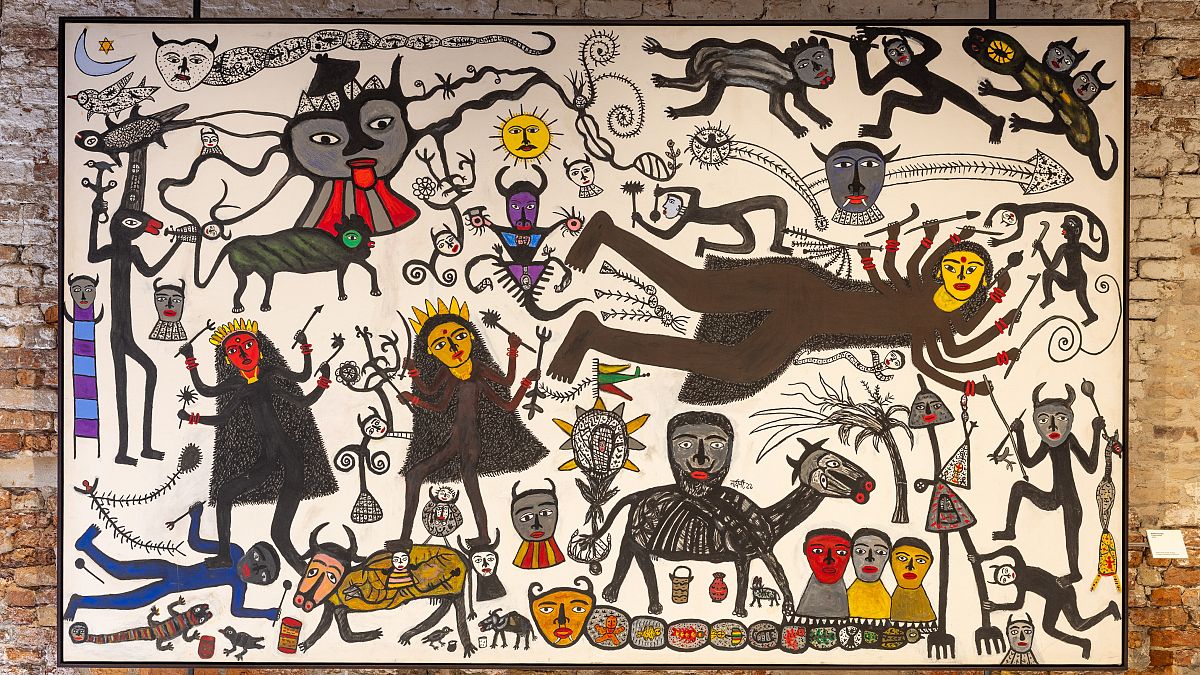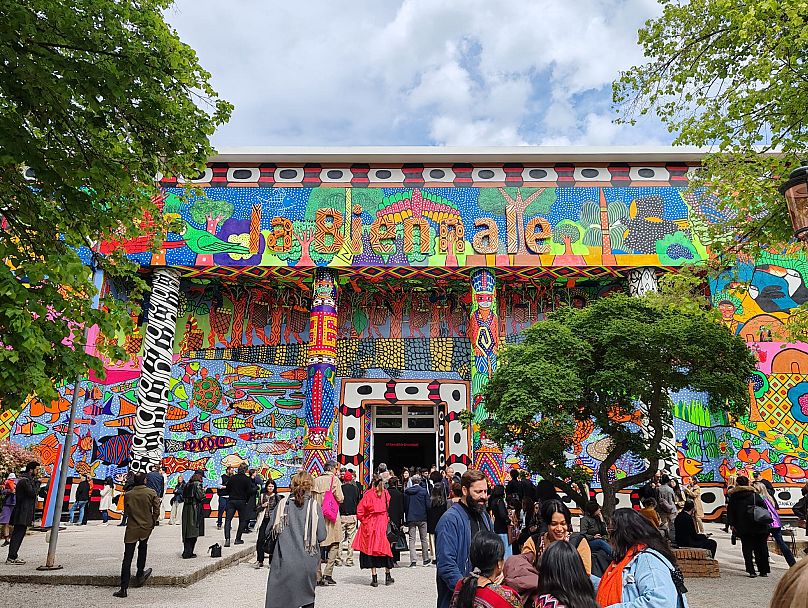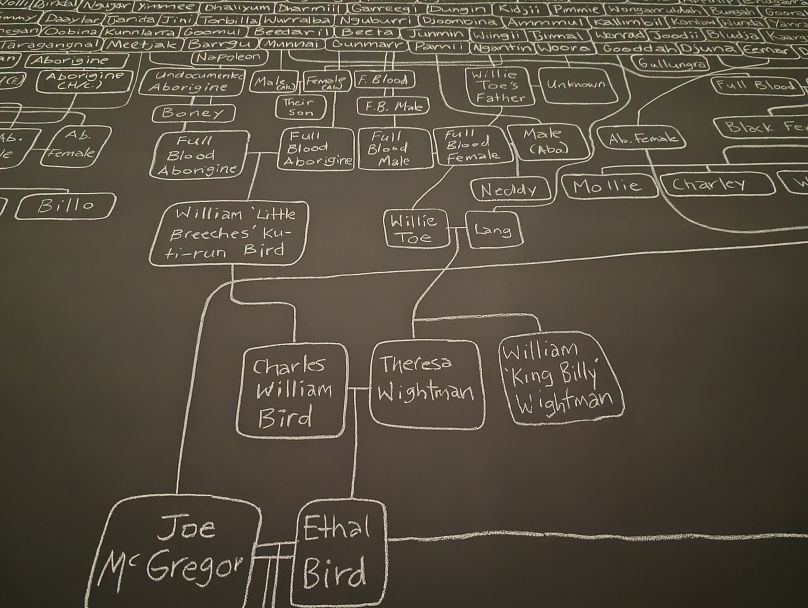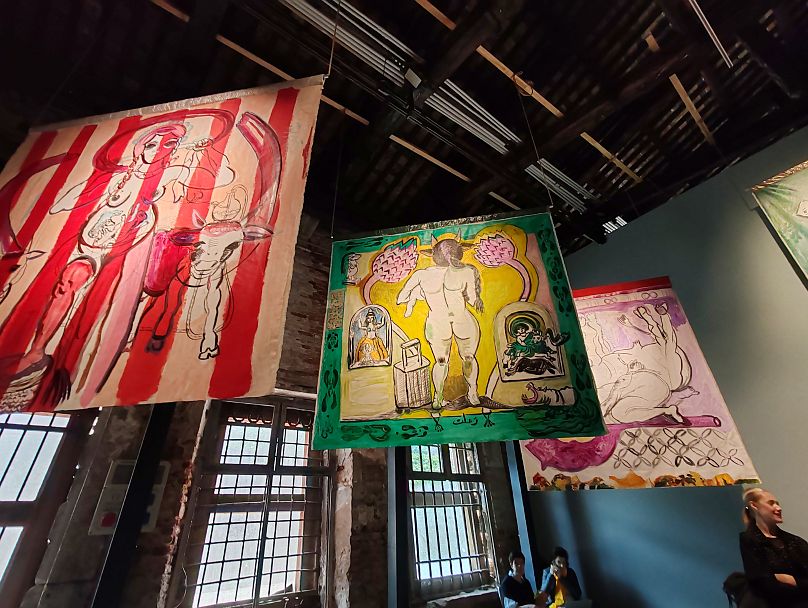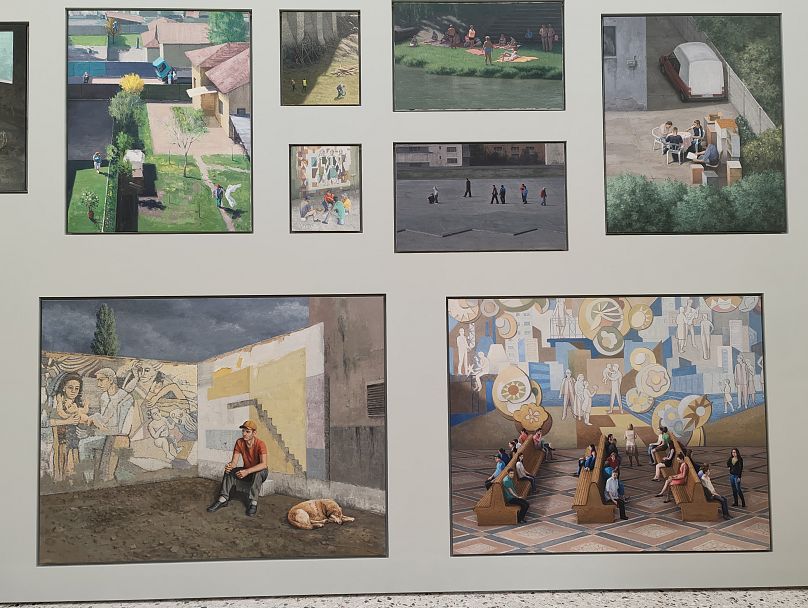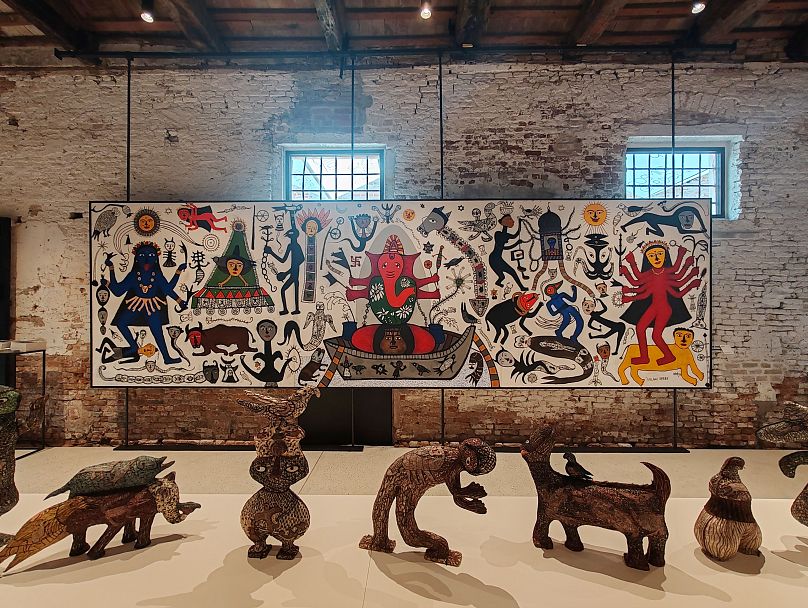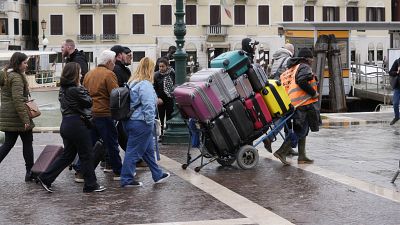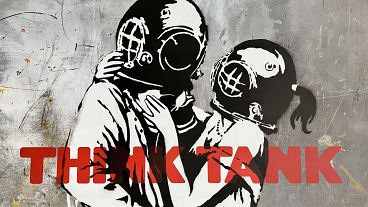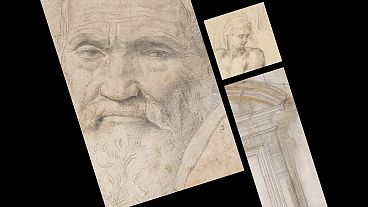The 60th edition of the event turns the spotlight on the global south and historically marginalised artists.
The 60th edition of the Venice Biennale is a bright, bold and boundary-breaking spectacle.
The international exhibition is renowned for distilling many of the major geopolitical issues of the moment, and this year is no exception.
Curator Adriano Pedrosa’s title "Foreigners Everywhere" is conveniently malleable, bringing under its wing topics like nationalism, displacement, marginalisation and colonialism.
Some pavilions and exhibitions explicitly confront these contemporary issues. The Dutch Pavilion did more than just reflect on the colonial art theft debate; it enacted change by persuading a US museum to return a wooden statue to the Congo for the duration of the exhibition.
The Australia pavilion’s installation is the work of First Nations artist Archie Moore and uses a gap-ridden genealogical chart to spotlight the dark, traumatic history of Indigenous Australians.
Others consider these topics more conceptually, evoking the experience of being a stranger or challenging the rigidity of borders.
The 60th edition of the event also turns the spotlight on the global south, historically de minimis in the upper echelons of international art. Pedrosa is the Biennale’s first Latin American curator and his emphasis on representation and visibility is palpable.
Here are the pavilions and collateral exhibitions you shouldn’t miss during a visit to the 2024 Venice Biennale.
Nucleo Storico and Nucleo Contemporaneo, Central Pavilion
There’s potent symbolism in the transformation of the normally white Central Pavilion in the Giardini (recalling the white cube that enshrines Western art) into a riot of colour. The mural is the work of a collective of painters from the Brazilian Amazon, MAHKU (Movimento dos Artistas Huni Kuin) which dispenses with Western art modifications.
“It renounces mimesis, perspective, the rules of proportion, and canonical technique, to commit itself solely to the forces of miração, the visionary experiences stimulated by the ingestion of ayahuasca during nixi pae rituals,” according to the group.
The intricate, eye-popping paintings draw on mythical narratives and ancestral stories woven into a tessellated, graphic flatlay cladding the architectural elements of the exhibition hall facade.
Inside, you find the work of dozens of ‘outsider’ artists, many of whom have never exhibited at a Biennale before.
Nucleo Storico and Nucleo Contemporaneo, Arsenale
In the other half of the main exhibition in the Arsenale, textile is the dominant material discipline and the global south the dominant source. Again, it is calls into question the enshrined classic forms that make up the fine arts - painting, sculpture and drawing.
The halls are filled with embroidery, felt, dye and stitches. Artists who would never use the term to describe themselves and may have never exhibited work in a museum before present pictorial ideas in fabric and threads.
Look out for the vast embroidered canvas near the beginning of the exhibition by the Bordadora de Isla Negra. This Chile-based group comprised self-taught women who created vivid textiles that depicted daily life in their coastal village between 1967 and 1980.
Nearby, Philippine-born Pacita Abad’s trapunto works of painted and stitched cloth are inspired by the artist’s interest in the immigrant experience. "Haitians Waiting At Guantanamo Bay" (1994) depicts the hopeful behind barbed wires.
"Blend in Before You Stand Out" (1995) features a woman dressed in a sarong, Yankees baseball cap and Bulls basketball jersey illustrating the struggles of immigrants when integrating into a new society.
Australia Pavilion, Giardini
As you walk from the sunlight into the dim interior of the Australia pavilion, it takes a few seconds of looking at the black walls to bring the dense white chalk diagram into focus.
All four sides are covered with a genealogical chart that traces First Nations artist Archie Moore’s Kamilaroi, Bigambul and British ancestry going back 65,000 years.
While "kith and kin" pays homage to First Nation Australian lineage and interconnectedness, it simultaneously expresses a past steeped in trauma.
Replacing the names in dozens of boxes are racial slurs, information on blood purity and cast and gaping holes representing those murdered or cancelled from public records.
A central table is piled with documents pertaining to redacted coroners’ inquests into the deaths of Indigenous Australians held in state prisons. It is a powerful and sobering space - and took home this year’s Golden Lion award for Best National Participation.
Germany pavilion, Giardini
Drawing long queues during the press preview days, the German pavilion has been pegged by many as a must-see. Indeed, it ticks all the boxes for what visitors want from the Biennale: a wacky and destabilising performance.
Exhibiting the works of artists Michael Akstaller, Yael Bartana, Robert Lippok, Ersan Mondtag, Nicole L’Huillier, and Jan St. Werner, "Thresholds" explores the concept of boundaries.
For the first time, and for the duration of the exhibition, the installation extends beyond the confines of the Giardini to another location: the neighbouring island La Certosa.
The symbolic deconstruction of nationhood has become a transannual theme as the pavilion grapples with its fascist heritage and architecture.
Whether visitors will make the physical journey to La Certosa is to be seen, though, particularly as Ersan Mondtag’s dust-coated, embattled performance in the pavilion is stealing the show.
Lebanon pavilion, Arsenale
Taking a cue from Pedrosa’s central exhibition, Lebanon’s pavilion seeks to overturn a long-established Western myth.
In "A Dance with Her Myth", artist Mounira AI Solh delves into the founding of Lebanon with the story of the Phoenician princess Europa who is seduced and abducted by Zeus disguised as a white bull.
Al Solh flips the myth on its head. Rather than a woman succumbing to a man, she redressed the gender balance with a reimagining of Europa “tossing [Zeus] around with her feet as if he were a kicking ball.”
"A Dance with Her Myth" is set up around a boat, inviting visitors on a symbolic journey of emancipation.
On the boat’s sail, a 12-minute film is projected with scenes of the goddess spinning an urn containing a bull’s head. “I looked for a magnificent white bull … but all I found was a goat,” reads a line of poetry.
“I want to show that we, as women, do not want to play the role as victims,” AI Solh said in an interview with pavilion curator Nada Ghandour. “We need to take back our stories, colour them, change them, reverse them, turn them around, in order to reappropriate them.”
Romania pavilion, Giardini
Under the title "What Work Is", the Romania pavilion features the work of Sarban Savu and the Atelier Brenda represented by designers Nana Esi and Sophie Keij.
In the luminous concrete space, the walls are filled with paintings reminiscent of social realism but painted with more delicate pastel hues.
On closer inspection, the scenes set in places of work show moments of rest rather than labour, “populated by disorientated protagonists and lethargic extras.”
Men in hard caps sit on improvised stools in an oddly empty construction site; a museum attendant takes a nap in a chair in front of a medieval altarpiece.
The works reflect on feelings of displacement and homesickness associated with migratory work.
Cosmic Garden, Salone Verde
With its presentation of Indian artists and embroidered works, the collateral exhibition Cosmic Garden could almost be an extension of Pedrosa’s Nucleo Contemporaneo.
Housed in the Salone Verde, the rooms are a delight of mystical and enigmatic paintings and sculptures by Indian artists Madhvi Parekh and Manu Parekh. Their works are inspired by ancient Indian myths and esoteric Vedic symbols.
Showcased alongside are Karishma Swali and the Chanakya School of Craft’s reimaginings of their work in colossal panels of embroidery.
“The project seeks to re-evaluate the mutual relationship between women and embroidery, transcending the confines of domesticity and bringing hand-embroidery into the public sphere,” the curators say.
The paintings and textiles are whimsical and high energy, filled with multi-limbed red and blue deities and metamorphosed humans and animals.
